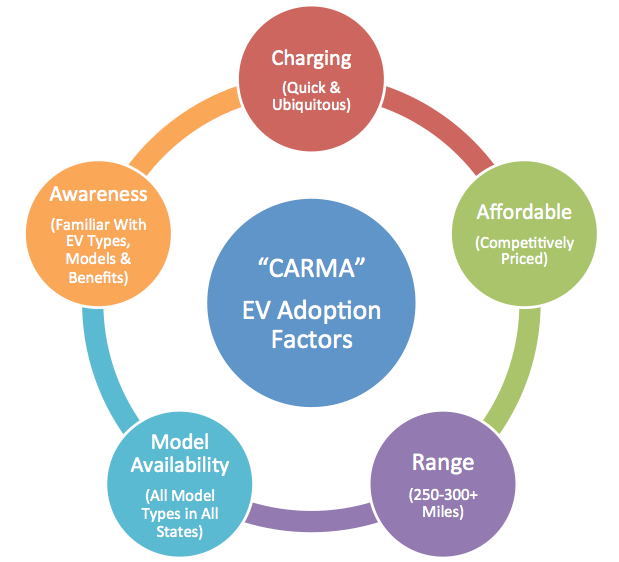Welcome to my newsletter on the electrification of traditionally fossil-fueled stuff. If you were forwarded this post and liked it, please subscribe! We cover:
Investing - Batteries Now Included Fund,
Vehicle design - Night Shift Bikes, and
Going electric - My Next Electric.
Today it’s a quick 8-minute clip on 5 ways an EV can stress you out. Clip #1 is here. Amy and Scott’s full series is on Apple, Spotify, and YouTube.
8 minutes on the 5 Anxieties of EV life
A special thanks to the team at evadoption.com for their CARMA framework. I’ve used it in most of my courses and 1:1 coaching. If you need help with your next electric, come see me at mynextelectric.com.

Charging - 80% of charging is done at home, but you need a driveway or a city curb permit to do it. We’re still a long way from anyone living anywhere charging overnight. For now a mix of slower, better-for-your-car-and-wallet home charging plus DC-fast charging at EV filling stations is how most of us are doing it.
Affordability - In January of 2024, the average EV was 4% more expensive than a similar gas car and still dropping; we may hit price parity this year. Chinese EVs are way past it; good ones are $20K.
Range - Battery costs have dropped 90% since 2010, and that means we can get bigger batteries into cars now, good for almost 400 miles. But it doesn’t mean we should. Range is about more than the raw size of your battery; it’s about the efficiency of the total package, especially aerodynamics and charging curves. Since batteries are 100X worse at storing energy than gasoline, our vehicle fleets might get more diverse as we electrify, smaller (more fun) things for shorter trips, maybe one big car for the road warrior stuff. Investing opportunity: wall-mount keyring holders for households who’ll need to swap cars more often….?
Models - 2024’s the year of really cool EVs, especially smaller, more imaginative models, like the spicy Ioniq 5 N. Buckle up.
Availability - We’re getting there. US auto companies still make too much money on huge cars, and that’s slowing their work on smaller, faster, funner, cheaper. The current obsession with sustaining innovations in Plug-In Hybrids is textbook denial about how fast new tech is coming at incumbents. I empathize with auto companies; The Innovator’s Dilemma is very real, and we’re watching it in real time.




